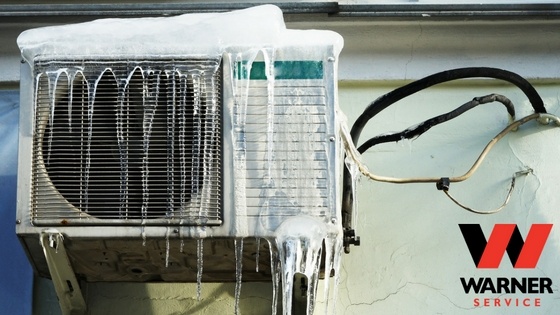
Fall has come and gone. Homeowners around Maryland and Northern Virginia are prepping their homes in case Mother Nature decides to rival last winter’s snowstorm. To help you get ahead of the game, check out this compilation of our expert tips from over the years for winterizing your home:
- Invest in (or build) a draft snake. According to the U.S. Department of Energy, drafts waste between 5 to 30 percent of your home's energy, which can cause faulty thermostat readings. To avoid this, buy a draft snake from a local hardware store, or make your own by using a rolled up bath towel or sewing together a piece of fabric that’s as long as the bottom of the door and filling it with sand or pet litter.
- Perform a Home Energy Audit. Home Energy Audits are an affordable way to start saving money, as they help homeowners diagnose ways in which your home is losing heat in the winter.
- Try weather-stripping. Use the weather-stripping or caulk to seal any gaps in your home’s windows, chimney, piping, and foundation.
- Properly store window air conditioning units. If you choose to purchase a winterizing cover, then you can leave window A/C units in place. However, to store it away for the season, turn off or unplug your air conditioning as soon as the outside temperature drops below 60 degrees Fahrenheit.
After that, store away the front cover and/or foam padding and ask for help to lift the air conditioning unit from the window. (Be sure to wear gripped gloves and close-toed shoes and place an old towel on the ground.) Carefully clean each part with a cloth, then store it in a garage or shed away from critters. - Change the air filter. Changing your home’s air filter monthly can reduce airborne allergens and pathogens, which are at an all-time high during the winter months. If homeowners invest in an HEPA filter, it can remove up to 99.97 percent of debris and bacteria. Clean filters also help distribute heat more evenly throughout your home because it increases airflow in the ductwork.
- Run fans clockwise. Because the fan’s blades are moving clockwise, it produces a warmer breeze than counterclockwise rotation.
- Focus on the lawn. Trim branches to prevent icy power outages or property damage. Homeowners should also aerate the lawn, and apply winterizing fertilizer to promote deep-root growth. Clean soil from planters, and bring everything inside, including outdoor furniture, to avoid cracking from dryness. Lastly, put any attached hoses in the garage to avoid cracking, and inspect exterior lighting to prevent slips (which can also be done with salt or snow melt).
- Lower the water heater’s temperature. Many professionals turn the water heater’s temperature to around 170 degrees Fahrenheit as an installation formality. However, many homes don’t require that much steam and pressure. To save some money, turn it down to 120 degrees Fahrenheit. If you want to be more environmentally friendly, you can contact an expert about installing a tankless water heater or installing residential solar panels.
- Schedule a check-up. In order for your home’s heating system to perform its best this winter, you should schedule a check-up where a qualified technician will inspect the system to make sure it can handle below-freezing temperatures.
- Examine drainage pipes. As snow melts, be sure it flows away from your home’s foundation. Also ensure that gutters and downspouts are properly fastened and clear of debris and leaves. While you’re looking for leakages, test the sump pump with our easy-to-follow guide.
- Lower the thermostat. For every degree you lower the thermostat, you’ll save between 1 and 3 percent on the energy bill. Homeowners should also consider a programmable thermostat. Check out a few reasons it benefits your home here.
- Check the roof for loose, missing or cracked shingles, and replace if necessary. While you’re up there, make sure vents and other openings are covered to prevent critters from nesting during hibernation.
- Insulate your home’s pipes. You’ll pay less for hot water, and it’s less likely that the pipes will freeze. For more basic information on how to prep for frozen pipes, click here.
Warner Service wants to keep you and your family warm this winter. That’s why we’re offering a printable HVAC Maintenance Checklist, so you can keep up with the dropping temperatures. Download it below:


